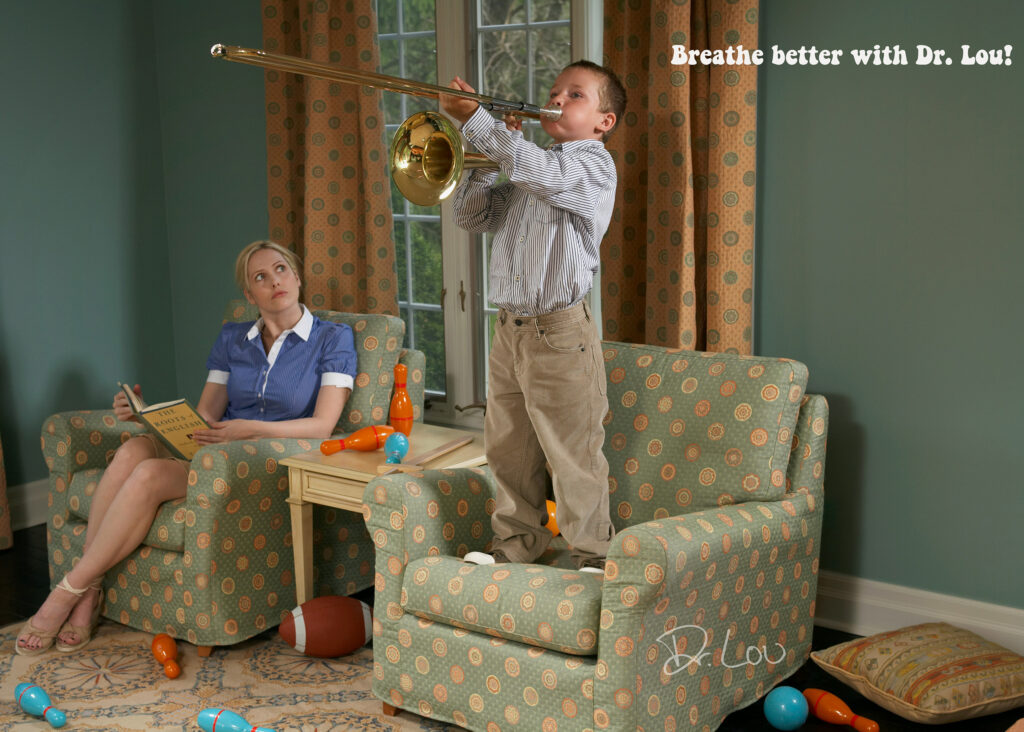Breathe better, play better.
How posture directly affects the respiratory capacity of musicians and athletes.
Breathing capacity is crucial for horn players, directly affecting their performance and endurance. Optimal breathing in brass musicians requires robust lung function, healthy respiratory musculature, and unobstructed thoracic and cervical spinal mobility. Recent insights suggest that cordyceps mushroom supplementation may support respiratory health. Chiropractic care, especially targeting posture and spinal mobility, can dramatically enhance chest expansion and breathing efficiency.
Respiratory Capacity in Horn Players: Why It Matters
Horn playing demands strong, coordinated respiratory effort. While research shows wind instrument players may not always have higher vital capacities than predicted for their age and body size, musicians, particularly brass players, often develop superior respiratory pressures and control through years of practice. Maintaining maximal lung performance is essential for sustaining long notes, dynamic phrasing, and managing the instrument’s resistance.

Chiropractic care helps breathing capacity in horn players, and in parents who yell at them!
Cordyceps Mushroom and Respiratory Performance
Cordyceps sinensis, a medicinal mushroom, is known to enhance respiratory health and oxygen uptake. Studies indicate cordyceps supplementation improves oxygen utilization (VO₂ max), decreases inflammation, relaxes bronchial smooth muscle, and supports overall lung function, benefits especially valuable for musicians requiring prolonged and powerful breaths. Whether managing asthma, maximizing breathing efficiency, or recovering from fatigue, cordyceps is, at the very least, a safe adjunct to traditional respiratory training.
Posture and Spinal Mobility: Cornerstones of Breathing
Good posture allows the diaphragm and intercostal muscles to work efficiently, supporting strong and deep breathing. Forward head posture and thoracic kyphosis (hunching), common in musicians due to instrument positioning and long rehearsals, can compress the rib cage, restrict chest expansion, and limit respiratory function. Studies indicate poor posture can reduce lung capacity by up to 30%, making corrective strategies essential.
Cervical and thoracic spine mobility is directly related to breathing mechanics. Restrictions, whether from muscular tension, joint dysfunction, or chronic slouching, reduce thoracic movement and impair effective ventilation. Chiropractic care targeting these regions can relieve musculoskeletal stress, restore mobility, and improve the diaphragm’s action—yielding measurable respiratory benefits, especially for musicians.
Stressors and Restrictions in Horn Players
The physical demands of horn playing expose the cervical and thoracic spine to several stressors:
-
Prolonged sitting and instrument weight.
-
Repetitive neck flexion or extension (especially in orchestra settings).
-
Forward head posture and upper crossed syndrome.
-
Rounded shoulders and increased thoracic kyphosis.
-
Static positioning that restricts rib, spine, and chest wall movement.
Over time, these stressors can contribute to spinal joint hypomobility, muscle imbalances, and even nerve entrapment—directly translating to reduced chest expansion and diminished lung capacity, as seen in clinical studies of musicians and spinal cord patients.
Chiropractic Care—A Breathing Ally for Musicians
Chiropractors are uniquely equipped to address spinal restrictions and postural faults, employing adjustments, soft tissue therapy, and rehabilitative exercises. By optimizing thoracic and cervical mobility, chiropractic care enables horn players to breathe deeper, sustain longer notes, and recover more quickly from practice or performance—making it an important part of a musician’s self-care strategy.
Respiratory capacity in horn players is shaped by the interplay of lung health, spinal mobility, and postural alignment. Cordyceps mushroom supplementation shows promise for supporting oxygen use and lung resilience. Coupled with attention to posture and proactive chiropractic care, horn musicians can maximize both their breathing performance and overall well-being—ensuring the vitality needed for every note and phrase.
Dr. Lou Jacobs, Chiropractor and acupuncturist in Portland, Maine, has been working with and specializing in the health and performance of musicians of all types, for over 23 years. His work has been highlighted in Guitar Player Magazine, and his client list is extensive, having worked with some of the best horn players in the world today. Dr. Lou is always accepting new patients and offers tele-consulting for musicians outside of Southern Maine. Dr. Lou also works with families and is board certified in chiropractic care for children and pregnant moms. Dr. Lou may be reached by calling (207) 774-6251 or by messaging his office manager, Sandra Escobar, at Sandra@DrLouJacobs.com.
……………
All information, content, and material of this video or website is for informational and demonstration purposes only. It is not intended to serve as a substitute for the consultation, diagnosis, and/or medical treatment of a qualified physician or healthcare provider.
Don’t use this content as a replacement for treatment and advice given by your doctor or health care provider. Consult with your doctor or healthcare professional before doing anything contained in this content.
By watching this video, reading this blog or seeing this content under in any other medium under any circumstances, or using any of Dr. Lou’s content, you agree to indemnify and hold harmless Jacobs Chiropractic Acupuncture (and its representatives), Dr. Lou Jacobs for any and all losses, injuries, or damages resulting from any and all claims that arise from your use or misuse of this content. Jacobs Chiropractic Acupuncture and Dr. Lou Jacobs make no representations about the accuracy or suitability of this content.
USE OF THIS CONTENT IS AT YOUR OWN RISK.
With regard to supplements:
These statements have not been evaluated by the Food and Drug Administration. This product is not intended to diagnose, treat, cure, or prevent any disease.
